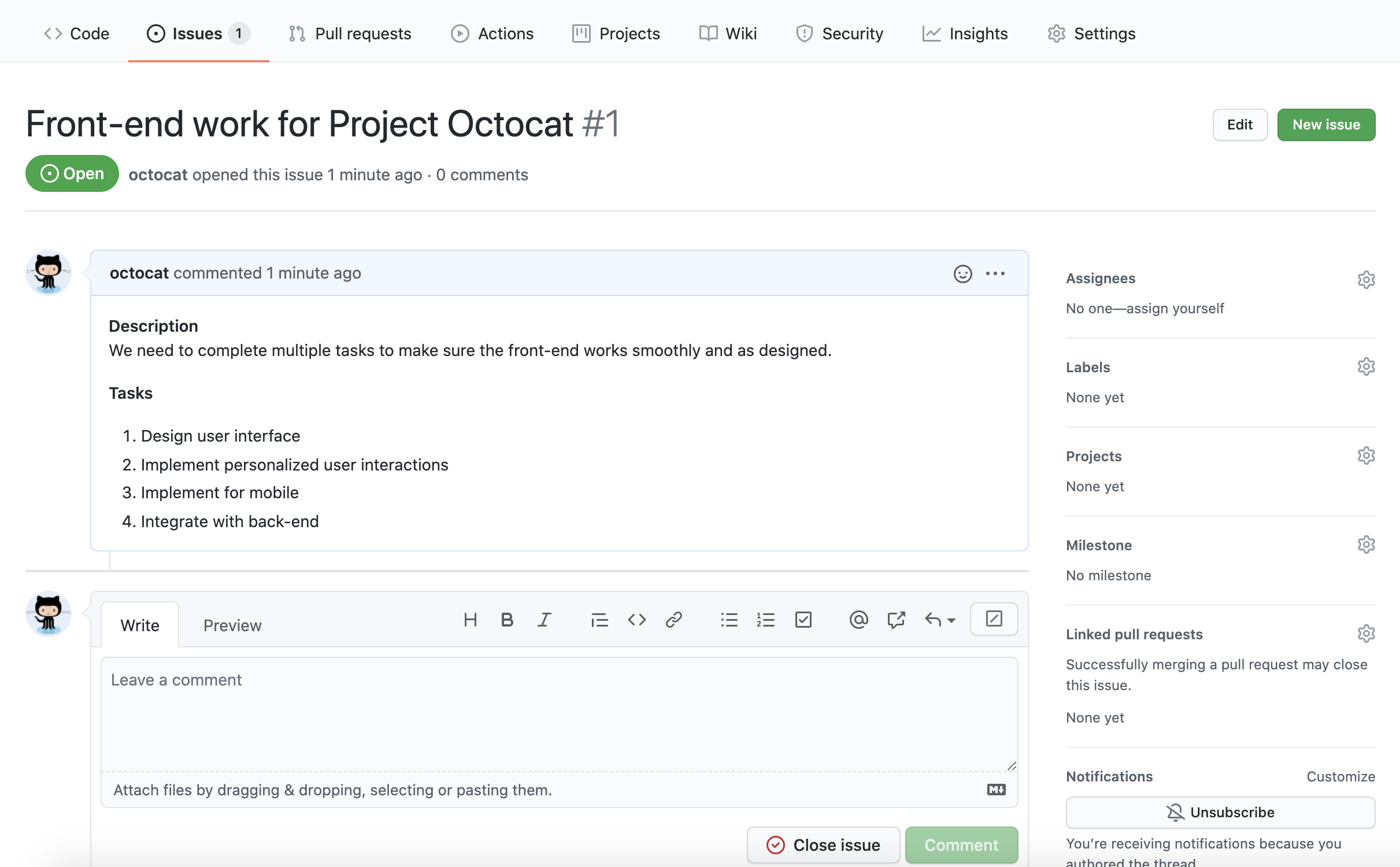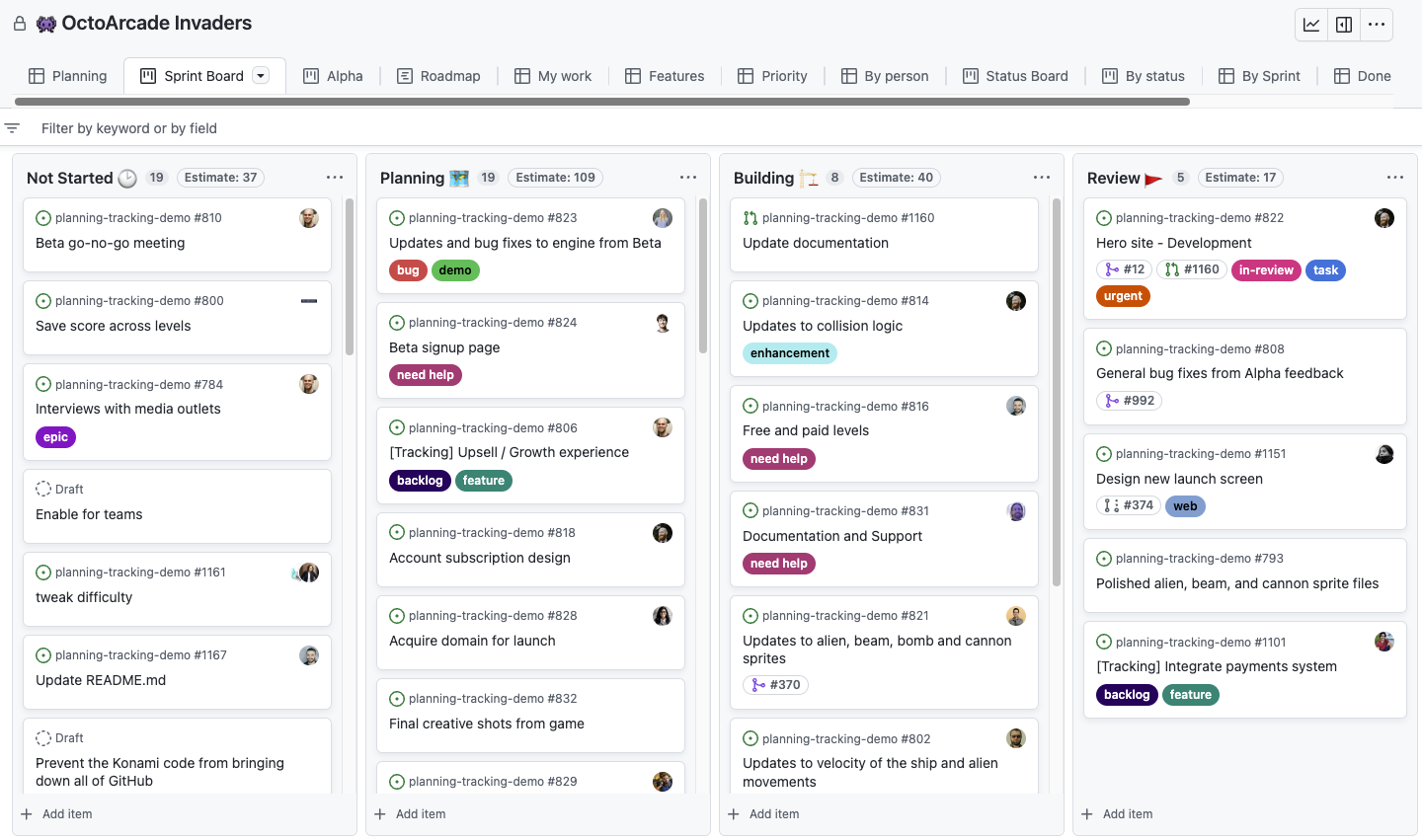Sprint Planning views - JU-DEV-Bootcamps/ERAS GitHub Wiki
Communicating repository information
You can create a README.md file for your repository to introduce your team or project and communicate important information about it. A README is often the first item a visitor to your repository will see, so you can also provide information on how users or contributors can get started with the project and how to contact the team. For more information, see About READMEs.
You can also create a CONTRIBUTING.md file specifically to contain guidelines on how users or contributors can contribute and interact with the team or project, such as how to open a bug fix issue or request an improvement. For more information, see Setting guidelines for repository contributors.
Opening issues and using task lists to track work
You can organize and track your work by creating issues. For more information, see Creating an issue.
Issue example
Here is an example of an issue created for a large initiative, front-end work, in Project Octocat.

Task list example
You can use task lists to break larger issues down into smaller tasks and to track issues as part of a larger goal. Task lists have additional functionality when added to the body of an issue. You can see the number of tasks completed out of the total at the top of the issue, and if someone closes an issue linked in the task list, the checkbox will automatically be marked as complete. For more information, see About task lists.
Below we have added a task list to our Project Octocat issue, breaking it down into smaller issues.

Changing the layout of a view
You can view your project as a high-density table, as a kanban board, or as a timeline-style roadmap.
In this article
About the table layout
The table layout is a powerful and adaptable spreadsheet comprised of your issues, pull requests, and draft issues with metadata from GitHub and the custom fields you've added to your project. You can group, sort, and filter items, and show or hide fields in your table layouts to suit the needs of everyone on your team. For more information, see Customizing the table layout.

About the board layout
The board layout spreads your issues, pull requests, and draft issues across customizable columns. You can create a kanban board by setting your column field to a "Status" field or set any other single select or iteration field as the column field.
You can drag individual or multiple items from column to column and the value of those items will adjust to match the column you drag them to. For more information, see Customizing the board layout.

About the roadmap layout
The roadmap layout provides a high-level visualization of your project across a configurable timespan, and allows you to drag items to affect their start and target dates or selected iteration. Roadmaps use your custom date and iteration fields to position your issues, pull requests, and draft issues on a timeline, allowing you to track work over time and watch progress.
You can also display vertical lines to highlight key dates for your project, including iterations, milestones, and the dates of items in your project. These markers help you get a clear overview of your upcoming workload and how it's distributed across iterations or milestones. For more information, see Customizing the roadmap layout.

Changing the project layout
You can set each view in your project to a different layout.
-
Click next to the name of the currently open view.

-
Under "Layout", click either Table, Board or Roadmap.
ROADMAP
https://github.blog/changelog/2023-01-31-roadmap-in-projects-public-beta/